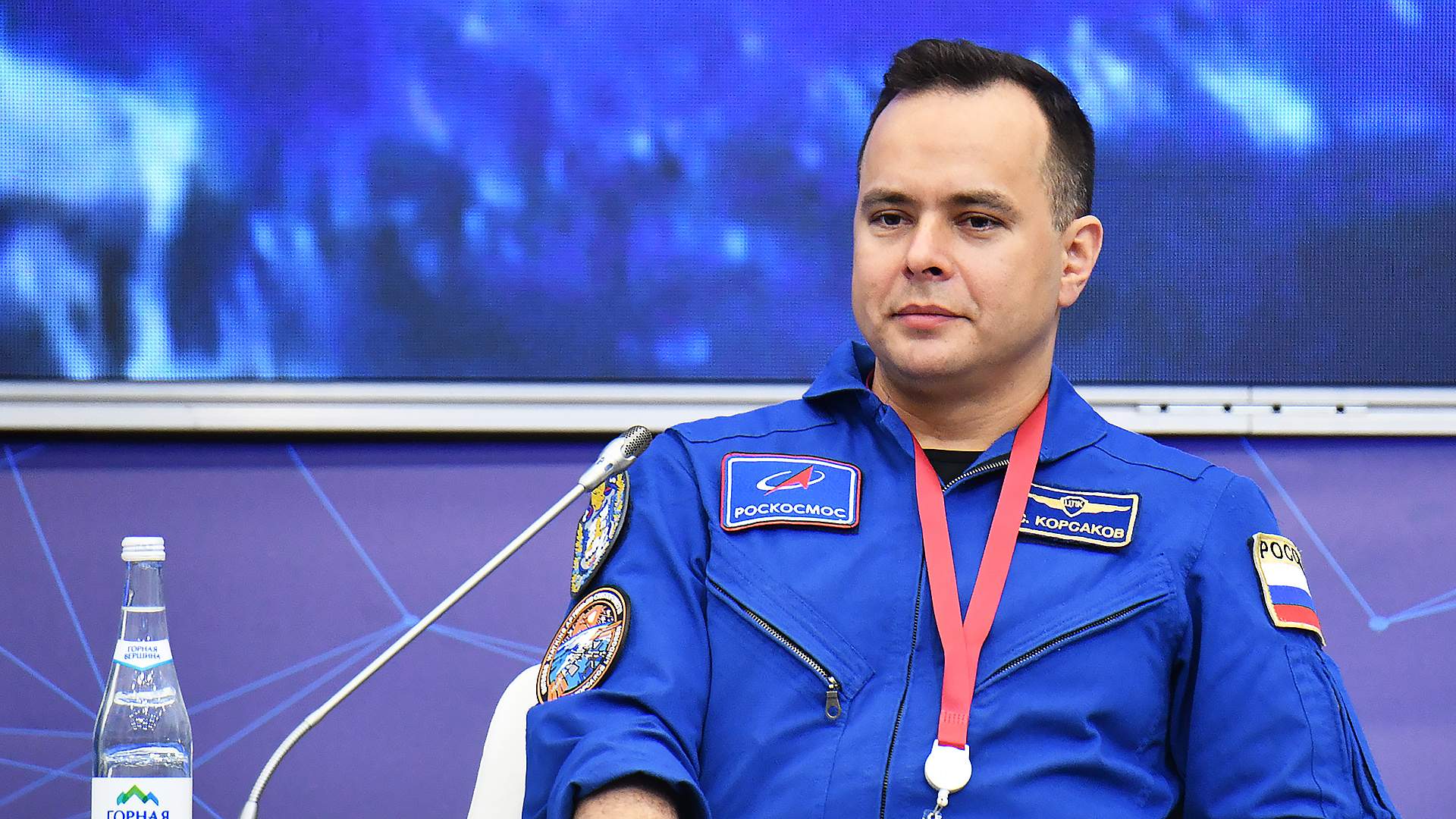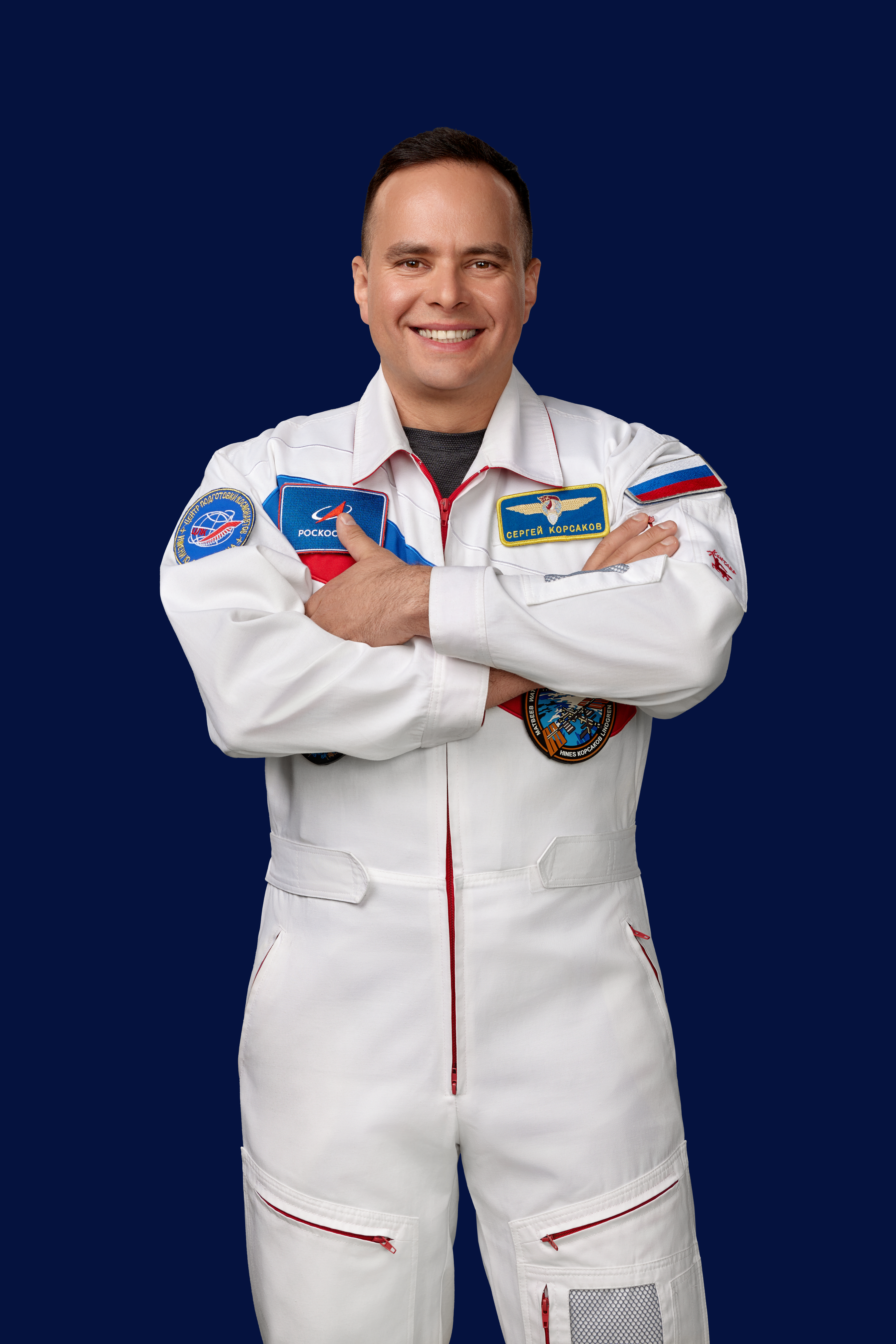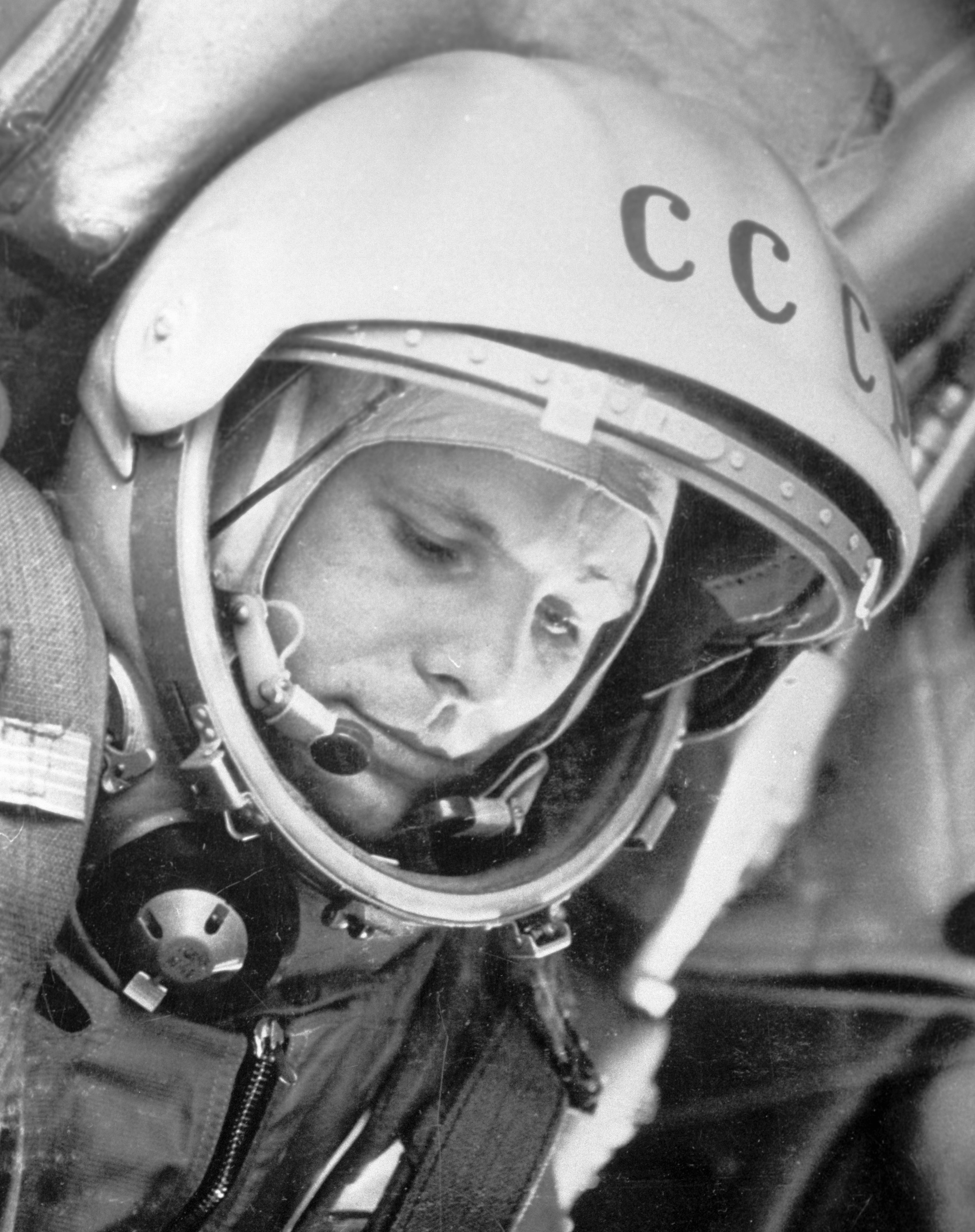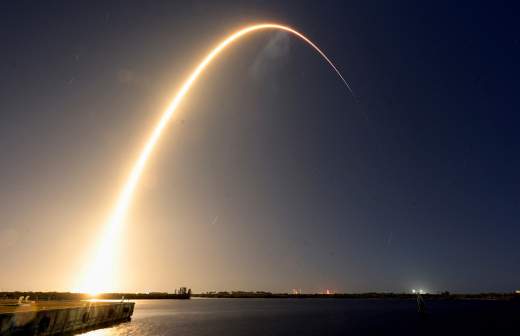- Статьи
- Society
- "An astronaut has been preparing for 10 years, flying for 9 minutes and working very hard"
"An astronaut has been preparing for 10 years, flying for 9 minutes and working very hard"

On April 12, Russia celebrates Cosmonautics Day, a holiday that is traditionally loved and appreciated in our country. How life on the ISS and the training of modern cosmonauts works, whether it is possible to join the squad in adulthood and how the crew feels after returning to Earth, as well as about space fairy tales for children in the Izvestia podcast "Let's figure it out", Hero of Russia, cosmonaut pilot Sergey Korsakov told. He was able to join the squad through an open competition, and in 2022 he spent more than 190 days in orbit.
How is the open enrollment for astronauts arranged?
As far as I understand, you are originally a rocket scientist by profession. Tell us, please, how did you get the idea to become an astronaut?
— In fact, the stars have attracted me since I was a child. Even when I was a little boy, reading science fiction books and watching movies, I was attracted by the very opportunity to discover something unknown, to see vast expanses in front of me, to fly somewhere to other planets and stars. Of course, I dreamed of becoming an astronaut, but I didn't know how to achieve this at all. It wasn't easy, so I decided to just be involved in this grandiose human endeavor, space travel. I figured I'd do best if I was a rocket engine engineer. That's why I entered Bauman Moscow State Technical University, graduated, and became an engineer.
Then I retired from the profession, but I kept trying to find out how to become an astronaut. In 2012, the first open recruitment for the cosmonaut corps was announced. And then my dream, which had been living in my heart all this time, came to life: "Sergey, you have to try, you are given a chance."
By that time, I had already established myself in my business [on Earth], but without a second thought, I threw it all away. Of course, it took a lot of effort and time — the selection for cosmonauts lasted for me for six months. At first, it included a correspondence stage, when a candidate for the detachment should not just write an application "I want to become an astronaut," but independently go through a large number of medical studies, collect all the certificates, all the conclusions, have the appropriate education, fortunately, I had it, relevant work experience and meet the standards for physical education. I started preparing hard, going through all the examinations, collected a huge bundle of documents, which I sent to the Cosmonaut Training Center. And at this correspondence stage, a large number of applicants were selected, who were admitted to the face-to-face stage. Already in Star City, we were more thoroughly checked both from a medical point of view and from a psychological point of view.
A large number is about 350 applications, which are sometimes written about?
— Yes, these are complete sets of documents. Sometimes these figures are compared with how many applications are submitted to other space agencies, such as NASA. This figure is much higher there, but you have to understand that it's just an application, a statement "I want to become an astronaut." And here, the person has already passed a preliminary self-selection. Firstly, he went through these trials, invested, spent time and effort, someone realized that his health would not allow him to become an astronaut, and dropped out. Therefore, I would not compare these figures.
What happened when you went directly to the preparation?
— For the first two and a half years, me and the guys who were selected, eight in total, were candidates for cosmonauts. It was only after completing general space training, where we devoted a lot of time to theory, that we became students, returned to our desks, and passed probably hundreds of exams and tests, which are very rigidly accepted by us. In addition, they received training on survival in various climatic and geographical environments. This is also a separate type of survival in the winter forest, in the desert in summer, in the mountains, and in the desert in winter. There are a lot of interesting types of training such as skydiving, jet piloting, pressure chamber, centrifuge. And it filled my life.
It usually takes an average of 10 years of training before a space flight. Someone flies in 7 years, someone in 15 years. These 10 years have been full of very interesting challenges and events, so even if you haven't flown into space, as it happens, these are already valuable years that have given a lot and were very interesting.
But in general, the life of an astronaut resembles the life of a student, because there is a lot of theory. We study how a spaceship works, how to control it, and how to get out of emergency situations. There are a lot of calculated emergency situations where we can roughly imagine what could go wrong, and we need to know exactly what your actions are, a clear algorithm, so that in a stressful situation we can do everything correctly according to the instructions, not to be scared, not to panic, but to know what to do. It's the same with the space station. We study how it works, the equipment, how to install it, how to work with it, and how to repair it. We work out emergency situations.
We have a full-fledged mock-up of the Russian segment of the ISS, where we perform all these operations. They can simulate a fire, depressurization, and leakage of dangerous substances there. We are already studying the American segment of the ISS during business trips to Houston, where we also spend a lot of time. We have a mutual exchange of cosmonauts and astronauts. They come to us, we come to them. Thus, we interact with our foreign colleagues before the flight. Team building is underway. We fly there as friends, we don't get to know each other at the station, but we already work as a team.
How cosmonaut training works in Russia and NASA
Are the training systems generally different on the ISS for American astronauts and Russian cosmonauts?
— In general, they are similar in many ways, because the ISS is a single organism, a single station, and when it was still being designed, uniform protocols were developed, including training. Of course, there are some differences, but in general everything is similar. In preparation for my first flight, I was assigned to SpaceX's Crew Dragon spacecraft at some point and trained there.
At SpaceX, the training of astronauts to fly on their ship is strikingly different from ours and from the training at NASA. Everything is so much more intense and accelerated there.
Do we have any unique features of cosmonaut training that others don't?
— Yes, we have a lot of small differences. For example, astronauts do not perform parachute jumps. Apparently, for security reasons, in our country, on the contrary, it is considered one of the most important types of training. In a stressful situation, we practice our decision-making skills, because we don't just jump with a parachute, but during free fall we perform various tasks, tests for psychologists, and report on a dictaphone for a minute. Psychologists evaluate our condition in extreme conditions.
It really helps someone get rid of the fear of flying later. Because, besides the fact that you can experience fear when a rocket takes off from earth, astronauts who go into outer space say that it can also be a bit stressful when you open the hatch, see the earth below you and as if you were flying at an altitude of 400 km and could fall there. Of course you won't fall, it's weightlessness. When you have completed several hundred parachute jumps, you are no longer afraid of the open hatch and the views of the earth below you.
You can listen to the conversation with Sergey Korsakov here:
How does a person feel when flying into space
You have been in space for 194 days, but before that, as far as I understand, this flight was postponed several times. What did you finally experience when you found out that you were definitely going to fly?
— Preparation takes many years of hard work. An astronaut is not guaranteed a flight, and at any moment some event, health problems, or something else may happen, and your dream will not come true. That's why, after all these years, it's scary not to go into space anymore. Every step towards a rocket that brings you closer to your dream is getting easier and easier for you. When you close the hatch behind you, you realize that I'm in a rocket, and when it lifts off from the ground, you think, yes, that's it, it came true, I flew. At this moment, the cosmonaut probably does not feel any fear, at least I can speak for myself.
There is such a complex mixture of emotions inside, this is a sense of responsibility for the mission that is assigned to you, a feeling of happiness and euphoria from the fulfillment of a dream, you also listen to the sensations of your body, because immediately from the first minutes the overload begins to increase, you are pressed into a chair. Of course, this was tested on a centrifuge, but here it is in a real flight that you experience in a completely different way. And this mixture of sensations leaves no room and no time for fear. For the first 9 minutes, while the rocket puts the spacecraft into orbit, we don't have many tasks on board. We are mainly monitoring the flight, and we are ready to take some action if, God forbid, the launch vehicle crashes. But this is just the time when you can immerse yourself in your feelings and thoughts a little. And after the ship is withdrawn, very active work begins.
We can only briefly look out the window, marvel at how beautiful our planet is, make sure that it is round after all, and then we get down to active work. For the next 3-3.5 hours, while we are flying to the station, we are working all the time. In general, an astronaut spends 10 years preparing for a flight, then flies to the station for 9 minutes and reflects, and then works very hard again.
How long does it usually take for the crew to form up before the flight?
— As a rule, the crew is formed two years before the flight. And the joint training has been going on for two years. Astronauts are already getting used to each other, getting to know each other better than we interact in the squad. The first year and a half is a backup crew, and then the same crew becomes the main one. An additional six months of training — and they fly into space.
When you arrived on the ISS, was there anything that turned out to be completely different from what you expected? And what impressed you the most? It is clear that you are prepared, but surely in reality it is still something completely different.
— There was nothing that would completely change my view. Of course, we have been preparing for the flight for many years. We listen to the stories of our experienced cosmonaut colleagues who made the flight. We see photos and videos from orbit, images of our Earth. But when you look out the window for the first time, you can't believe your eyes, how incredible it really is, because our planet is incredibly beautiful. Even if you are on the surface of the Earth, you can probably travel all your life to different corners and admire the views, enjoy all its beauty, but it really opens up when you fly at least 400 km away, look from the side.
It's just indescribable, and at first it overwhelms you. It seems to you that this is too much for one person, you want to share it with someone. You start calling your colleague.: "Look how beautiful it is here!" My colleague, however, may not feel so good during his first days in space. Some astronauts still have a feeling of vestibular disorders, motion sickness. In this case, it is not very pleasant for a person to look out the window, this is an extra factor of motion sickness for him. But you want to share it, and we have a lot of cameras on board, cameras. You start taking photos and videos to share with all the inhabitants of the planet. And, fortunately, we can now do this on our social networks.
How do you feel when you look out the window of the ISS?
— You see a round horizon, around a star, you realize that you see the cosmos around you, you realize yourself in this emptiness. You are very acutely aware that this block of stone, our planet, seems to be hanging in the void among the stars, it is actually rushing at an insane speed, and you are rushing next to it, rotating around it, and there is such an immense void around you, you feel how small our planet is, especially you as a person on She knows how fragile and unprotected she is, and how we need to protect her. On the other hand, you understand the greatness of man, because man was able to see it with his own eyes, get off the Ground and find himself in space, because it was not a sight for a man, in fact.
How to tell children about space
To share these feelings, you just decided to turn to words, as far as I know, and already there, on the ISS, you started writing a book for children, right?
— Of course, when you fly in space for six months or a year, most of all you miss communication with your relatives, friends, family, and children. I really wanted my children to have the opportunity to look at it, feel weightlessness, and fly. And, fortunately, now we have more opportunities to connect with our family.
We don't feel disconnected because we can, in principle, connect in various ways. And in the evening, when we don't have much time, literally an hour and a half, besides looking out the window, taking pictures, playing musical instruments, watching movies, we first of all call the family. When I talked to my children, I told them bedtime stories.

At some point, I thought how great it would be if any child on Earth could listen to a fairy tale from an astronaut at night. Especially if this tale is written by an astronaut and sounds like his voice. It was my fantasy. I returned to Earth and thought about how to make it happen, and one day I met people who were able to realize this dream. Thus, the project "Cosmic Tales" was born, or, as we called it, "Cosmic Tales". We decided to make this primarily an educational project for all children, where knowledge about space, the Solar system, the planets, and the phenomena that occur there can be conveyed in a simple, accessible form.
The main idea of this project, which inspires us, is that we can not only provide knowledge, but also help children in special need. That's why we consider our project as a charity. We plan to work with foundations and really hope that in this way we will bring not only pleasure to children, but also benefit.
What do astronauts do after returning to Earth?
Let's go back from fairy tales to your reality, which, to be honest, also seems a bit like a fairy tale. When you came from outer space, how long did it take you to adapt to life on Earth, both physically, psychologically, and emotionally?
— When we return to Earth from space, at first we can't even walk. The feeling in space was that you were trained, pumped up better than ever on Earth. That's probably how it was. But despite the fact that we've been training hard for six months, doing sports, riding an exercise bike, running on a treadmill, when you return to Earth after weightlessness in our gravity, you feel like you're just made of lead. It's hard to raise your hand, turn your head.
Also, your brain has already forgotten how to navigate in gravity. We have a center in our brain that responds to gravity vectors. It doesn't work in space, it gives erratic signals. The brain correlates them with what the eyes see, understands that there is a misalignment, does not understand what is happening, what is the reason. He thinks that we may have been poisoned, which is how those with vestibular disorders feel sick. After some time, the brain decides that we do not perceive these signals from the vestibular apparatus, we are guided by the eyes and other organs.
Upon returning to Earth, the vestibular apparatus starts working properly again, and the brain needs to learn how to work with it, so at first it's very easy to fall if you're standing, you start to collapse, but it's hard to straighten up because the muscles that are responsible for stability and maintaining posture cannot be trained in space in this way. they have weakened, so the astronauts are first carried in their arms, supported by their hands for a while when we walk, and on the second or third day we more or less begin to walk carefully, while there is still a fear that you will fall.
We return to a full-fledged life when we are already allowed home to our family after three weeks, but the consequences are still felt. For example, you can run only after two months, and you can perform strength exercises that affect the spine in an upright state after three or four months. In general, it takes about six months to restore the body to the condition it was before the flight. And six months later, we undergo a medical examination, which indicates whether we are ready to prepare for the next flight.
Emotionally, of course, you feel a sense of joy that you have returned to Earth, you see your friends, relatives, loved ones, you miss a little weightlessness, those views from space that you enjoyed for six months. There is a feeling of euphoria and happiness. It seems to you that everything is fine. But after six months, you realize that you were still in a bit of a strange state on Earth for the first few weeks, maybe months. You only realize that in hindsight. You don't feel it in the process.
Do they feel, on the contrary, longing for space?
— At first, I often dreamed of space, the International Space Station. You fly it, you work on it. And all astronauts, of course, want to return. I want to fly more often, more.
It's clear. What do astronauts do when they get in shape after returning? What is your job on Earth?
— Our job is to prepare. We are such eternal students. We prepare before the flight, we prepare between flights. We also have training in flight. If an average of 10 years of training takes place before the first flight, then the second and third are much faster. As a rule, there is a three- to four-year break between flights. We immediately start preparing, restoring our knowledge, and learning new systems, because our technology does not stand still.
Both the spacecraft and the stations are constantly being developed and upgraded. We have to study new material, and in two years a crew is being formed, which immediately begins preparing for its mission. After the flight, astronauts also have much more social activities: we, of course, attend various student and school events, forums, meetings, talk, share experiences, share our impressions about space.
We celebrate the holiday in honor of Yuri Gagarin's flight, and it is clear that this moment was a key one for space exploration. But in your opinion, what other events are important and what have happened in recent decades, do you think?
— Of course, the main milestones of our cosmonautics are now known to every student. Let's start, perhaps, with the works of Tsiolkovsky. This is what laid the foundation for cosmonautics. The flight of the first satellite, the flight of the first living beings into space, dogs, and other animals.
Of course, this is a significant event that took place on April 12, 1961, the first flight of our cosmonaut into space, the first spacewalk, the first orbital stations, and the flight to the moon. The International Space Station, because it's actually an amazing example of how countries around the world can interact in space, despite borders and obstacles. This indicates that humanity is indeed approaching the moment when it is worthy to explore deep space and expand its habitat.

Of course, we expect new achievements in the future. We are all very optimistic about moving forward and upward. This includes the exploration of the Moon, the exploration of Mars, and I want to believe in the emergence of new achievements, means of transportation in space, and new engines that can quickly and safely take us even further. And to the planets of the Solar system, and beyond. So far, these are dreams, but I am sure that you need to dream about something impossible and it will come true.
Переведено сервисом «Яндекс Переводчик»















